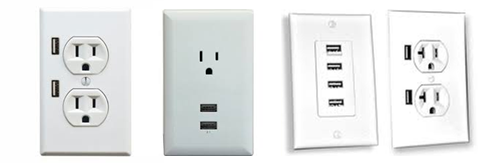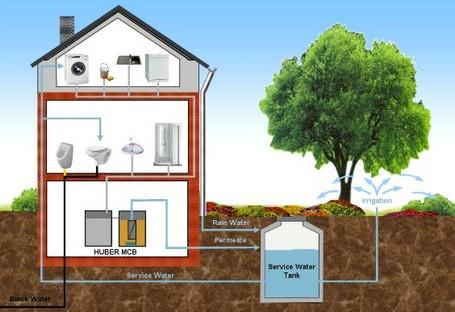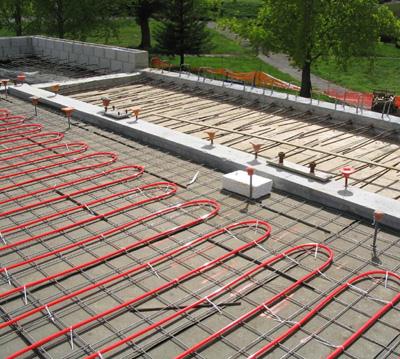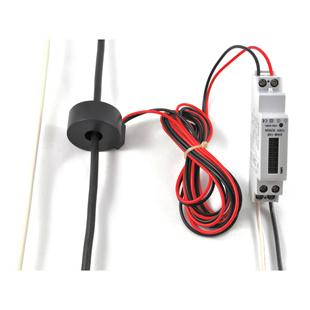I love architecture. I also love technology, so blending the two is a fantasy, or so I thought. Turns out my day job in highly distributed renewable energy forces me to rethink all of the systems in a home in the context of the latest efficiency, generation and storage technologies. Doing so is hard and turns my fantasy into some kind of Franken’home, stitched together from bits and pieces across several industries. Here’s what I mean.
First and foremost, my dream home is perched on a low-bank waterfront parcel on the Puget Sound near Seattle, Washington. If you have never meandered a salty sound beach, dodging star fish and geoducks and inhaling that pungent kelp-filled fragrance, you are missing out. But I digress…
Of course my dream home is efficient, adhering to the latest passive solar home design principles including a highly performant building envelope with carefully managed airflow, orientation that maximizes seasonal use of sunlight and a suitably sized thermal mass integrated into the home design as concrete flooring and walls. Combined these passive solar principles ensure my dream home barely sips energy.
Even so, today’s modern life filled with electronics comes at a price; the auxiliary energy load is high. Multiple computers, media equipment, appliances, electric car chargers and the like all require energy. Plus Seattle is not exactly bathed in sunshine all year long like the Southwest. To meet this load above and beyond the passive solar design, my dream home has rooftop solar, perhaps an 18 kilowatt installation. Leveraging the beachfront location, a 2 kilowatt micro-wind turbine takes advantage of the prevalent winds and helps to offset the load as well. Solar and wind variability necessitates storage, so my dream home also has a 30 kilowatt-hour, lithium-iron-phosphate battery storage system to smooth out this variability and accommodate the long winter nights at 48 degrees North latitude. Even with all this onsite generation and storage capacity, however, I still believe there will be long-term value in remaining connected to the electricity grid so my dream home includes a net meter with a connection to and relationship with my local electric utility.
Now that energy is covered, what’s next? Lighting. All lighting, indoor as well as outdoor and landscape lighting, leverages dimmable LED technology. Moreover, dedicated DC-only lighting circuits are built into my dream home and powered by the DC battery system. Doing so eliminates the incredible redundancy of converting natively DC lighting to AC every time it connects to power. The battery system is charged by solar and wind, which of course are both variable DC, and then on rare occasion by the AC connection to the electricity grid when renewable fuel falls short of demand or becomes more economical. In turn, the battery system serves to smooth out this variability, delivering consistent DC voltage for all lighting. This consistent DC voltage also gets used throughout my dream home to power DC accessories via Universal Serial Bus (USB) interfaces integrated everywhere. Imagine how convenient your kitchen island and counters, and even bathroom counters, become with traditional AC power receptacles plus USB ports for charging the myriad electronic devices now standardized on USB cables for power.
While the greater Seattle area ranks low for solar irradiance, rainfall is abundant, so rain water is carefully managed. All water on the structure and surrounding flat-scapes is collected, filtered and stored in an underground cistern, along with gray water generated inside the home from lavatories, tubs, showers, etc. Gray water in the cistern is then recycled for use in flushing toilets and for landscape watering.
On to heating. Have you ever experienced in-floor radiant heat, also known as hydronic radiant floors? The experience warms the soul (or sole anyway.) Because your feet are warm, and heat rises, the experience is very satisfying. It can also be very efficient, especially when embedded in concrete floors serving as thermal mass and mated to the latest solar water heating technology. Sure, a pump is required to recirculate the high energy-density fluid through the hydronic tubing, but very little electricity is required to actually heat the fluid. Only when the concrete flooring cools below the comfort level does in-floor radiant heat even need to kick in, and then only when there’s insufficient sunshine does the fluid need to be heated with an auxiliary electric heat exchanger. So my dream home includes in-floor radiant heating with a solar heat exchanger and electric backup.
What about cooling? The greater Seattle area is not known for its long stretches of 100+ degree days in the summer, but given the location of my dream home on the Puget Sound, taking in the view is paramount. View means glass, and glass means cooling load, especially when facing south or west. In-floor or in-ceiling radiant cooling is an elegant solution for all the same reasons in-floor radiant heating is. Unfortunately, radiant cooling is subject to condensation issues when relative humidity is high, which is the case in Seattle, so this solution will not work. Instead, careful attention is paid to passive solar design details like glass properties and thermal conduction between the poured concrete floor and the cool earth below, which dramatically reduces the cooling load overall. Then an efficient air-to-air heat exchanger like the one from Daikin is used for spot cooling where and when necessary.
My Franken’home is lying on the operating table all stitched together, an amalgamation of disparate yet highly efficient systems. It is not, however, alive. To make my dream home live, it’s not lightening I need but a control system, and this is the biggest gap in today’s available technologies. Nest, recently purchased by Google for a whopping $3.2 billion, helps show the way with its clever activity-based learning and optimization. My dream home takes this idea and extends it throughout all systems in order to give it life. Sensors abound. Each room or area in my dream home has its own hydronic radiant floor zone, lighting zone, window covering or shading zone, temperature sensors at ground level, torso level and ceiling level, occupancy sensors and lumen sensors for brightness. These sensors provide the real time feedback loop necessary to optimize the various systems over time. Plus each room or area has a manual control for temperature, lighting and shading. Then like Nest on steroids, over the course of a year’s worth of seasons, my dream home’s control system learns the relationships between season, time of day and activity – reinforced by manual adjustments to systems – and derives common default behaviors with the twin goals of hands-free comfort and energy efficiency most of the time. Overrides will occur all the time, and will remain easy, but with more and more time the activity trends will emerge that enable the system to be comfortable and energy efficient, automatically.
Energy efficiency in the context of occupant comfort has more to do with load management. The other dimension of efficiency in my dream home with onsite energy generation and storage plus a connection to the electricity grid involves economics. When should onsite energy generation be used directly by house loads, stored in the battery system or inverted through the utility’s meter onto the grid? The answer lies in the relative costs and benefits of the various options based on the time of use. Utility energy prices over time are one key input. For example, if energy is being generated when the utility will pay a premium, then this energy is inverted onto the grid while the house runs off the battery system. However, if historically the next day has a particularly high demand for lighting and USB device usage and there is insufficient time to fully top off the battery system overnight, then some of the renewable energy generation is used to charge the battery system instead.
Like the temperature, lumen and occupancy sensors used to optimize the energy loads of comfort systems, optimizing energy economics needs sensors too. These sensors are called meters, with current transformers (CT), and they measure energy, power, current, voltage and a host of more esoteric power parameters. My dream home includes granular energy monitoring. Each of the comfort systems – heating, cooling, lighting and shading – has its own meter and CT for individual monitoring. The heating system utilizes a pump and backup electric heat exchanger so each of these sub-systems is individually monitored with its own meter and CT. All major appliances are individually monitored too – refrigerator, oven, induction cooktop, microwave, dishwasher, clothes washer and dryer, media equipment and EV car charger. All DC USB accessory circuits are monitored together with a single meter and CT, as are the conventional AC power receptacle circuits, so individual accessories won’t be identifiable but accessory energy usage as a whole will be. Energy generation systems are also individually monitored. Together, all this monitoring information gets used to learn and optimize the economic performance of my dream home over time.
This level of whole-house system integration centered on simplicity for the home owner does not exist today, which seems shocking. It is such an obvious problem and all the bits and pieces exist separately, yet the path to integration redemption is littered with carcasses of startups and mature multinationals that have tried and failed. The market for whole-house system integration and automation is fragmented, as are standards. Plus the sales channels are wide and varied, a testament to the many ways such systems come to be in a house. This is a tough business challenge, but one that I hope will come along for the ride as energy efficiency, generation and storage innovations needing integration and automation flourish in the coming years.
One additional gap in today’s technology keeps my stitched-together Franken’home from getting off the operating table and really living: fire. I love fire. The ambiance and warmth it provides as an aesthetic design feature inside and outside is difficult to beat. More importantly, I love to grill. My dream home has an outdoor kitchen worthy of a Food Network television show, though it is covered. We are talking the Seattle area after all. Yet fire needs fuel, and fire fuel is neither renewable nor green. It’s a conundrum. On second thought, it’s not so much a technology gap as a personal problem. I am too unevolved to live without fire, but may be exactly unevolved enough to work for Geico Insurance.





